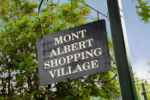1889
The
Canterbury proposal attracted community criticism, resulting in a new alternative route for the line to be built as an extension
of the Kew Railway, which would follow Doncaster Rd. This would have required a large tunnel to be built at Kew station. This
route was to continue past Doncaster and terminate at East Doncaster, with a branch line to Templestowe, starting at Bulleen
Rd.
1891
Interestingly,
another alternative route had been proposed, as a Branch line from Glenferrie Station, but was rejected due to the hilly terrain.
Yet
another proposal was mooted, this time from Collingwood station, through the Kew Mental Hospital grounds and a new station
would be built known as Willsmere, near the Yarra River.
This Collingwood proposal remained
active until 1902 when it was rejected by the Govt.
1910
A
proposal for a Branch line from Box Hill station had been put forward, which would follow part of the alignment of the earlier
Electric tram which had operated between 1889 and 1895 from Box Hill to Doncaster. This proposal was never examined in detail.
The
idea of a railway to Warrandyte had also appeared, as an extension of the Doncaster/E. Doncaster route
1920
By
this time, the Canterbury route had been discarded, and a further new route had been advocated. This was a variation of the
earlier Kew extension, and would follow the abandoned Outer Circle Railway, (1891-1942) running about one mile north of Doncaster
Rd, to the terminus at Doncaster Hill. The earlier suggestions for a branch line to Templestowe and an extension to East Doncaster
were not part of this new plan.
The
stations to be built were
to be at:
1. Kew
2. East Kew (High St)
3.
Belmore and Normanby Rds
4. Balwyn and Doncaster Rds
5.
Doncaster and Greythorne Rds
6. Doncaster Rd and Golf Links
7.
Shire Hall at Doncaster
1925
The plot thickens! Yet another
route was advocated, this time from Heidelberg Station over largely undeveloped land. This proposal continued to receive public
support up to about 1946 when it vanished.
The Land reserved for a rail line in Doncaster and Templestowe from Kew was sold off for
residential development
in the 1980s.
1929
Due
to the severe economic crisis (Depression), the Government did not proceed with any investment into construction of a Doncaster
railway
In
the 1880s, citizens had formed a number of public bodies, (“Leagues”), which met regularly to discuss and submit
transport proposals to the Government.
In
the eastern districts of Melbourne, these groups included:
Warrandyte
Railway League (1885)
Kew
Railway Extension League (1889)
Balwyn
Railway League (1902)
Parliamentary Committees examined many
of the proposals emerging from the Railway Leagues, and the Government produced annual Railway Bills, endorsed by the State
Parliament. Then, as of now, cash was in shirt supply!
Present Day
Detailed
discussion about present-day plans and proposals is outside the scope of this Heritage Study, but some background information
follows, of general interest:
1969
A railway to Doncaster (via Fitzroy, Eastern
Freeway and Bulleen) was part of
a
rail network development proposed in the 1969 Melbourne Metropolitan
Transport Plan.
The
1969 Plan proposed that a rail line be built from Victoria Park Station via
the Eastern Freeway to Alfreda Avenue, and then north east to a terminus
near the corner of Blackburn Road and King Streets.
1970s
Land was reserved along the Eastern Freeway,
and it was acknowledged
in the Eastern Freeway Lands Act 1971
2000s
In lieu of a rail service, Doncaster has recently been serviced with direct,
frequent bus routes to the city along the
Eastern Freeway:
2010
Doncaster area bus services underwent a
$40m capital upgrade and
$30
million per annum operational expenditure, as part of the Doncaster Area
Rapid Transport (DART) project.
The
DART project involved the creation of four SmartBus routes providing
greater frequency and extended hours of operation. DART currently carries
approximately 8,500 passengers per day.
2012
Doncaster Rail Study
Readers may wish to view the official report, with final options, of the Doncaster Rail Study 2012

